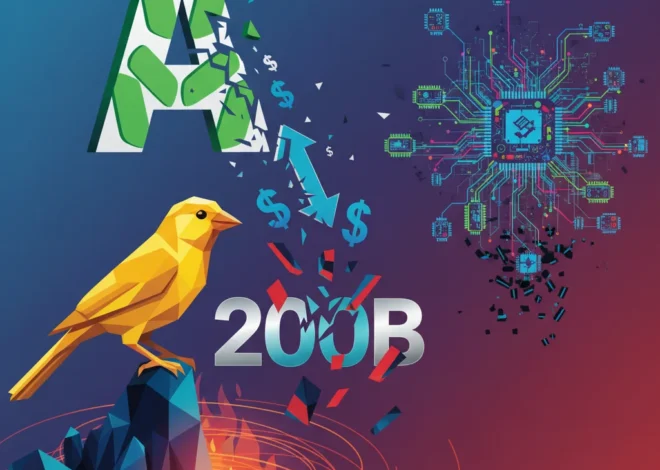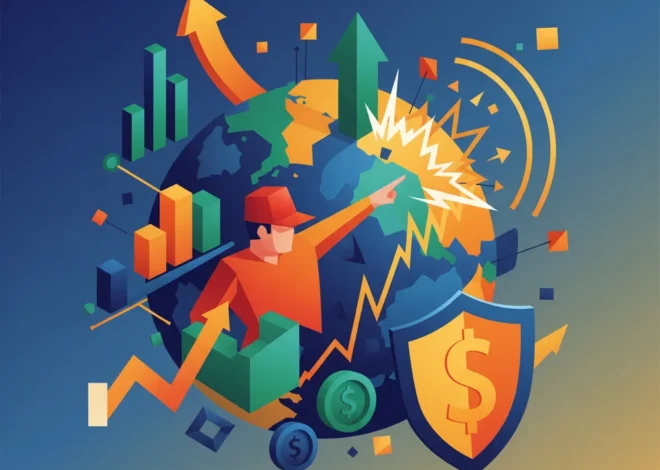
Beyond the Grid: What the FT Crossword Reveals About Modern Financial Strategy
For many, the morning ritual of tackling a crossword puzzle is a gentle mental warm-up, a delightful dance of wit and vocabulary. The Financial Times crossword, in particular, is renowned for its sophisticated and often cunningly cryptic clues. But what if this daily puzzle held a deeper, more profound parallel to the very world the newspaper covers? What if the black and white grid is a microcosm of the complex, interconnected, and often bewildering landscape of modern finance?
The skills required to conquer a formidable puzzle like the FT Crossword Number 18,205 are uncannily similar to those wielded by today’s most successful investors, economists, and business leaders. It’s not merely about knowing the answers; it’s about understanding the hidden language, recognizing patterns, managing risk across an interconnected system, and knowing when to pivot your strategy. In an era dominated by algorithmic trading and data overload, the humble crossword reminds us that the human capacity for interpretation, lateral thinking, and strategic foresight remains the ultimate competitive advantage in the global economy.
Decoding the Market’s Cryptic Clues
A seasoned crossword solver knows that a clue is rarely what it seems on the surface. “Flower in a river” might not be a plant, but rather something that “flows”—a river. This art of deciphering cryptic language is the first and most crucial parallel to the world of finance. The stock market communicates in its own unique, often opaque, dialect. From earnings reports filled with euphemisms to the subtle signals of central bank statements, every piece of information is a clue that requires careful interpretation.
Consider the jargon: quantitative easing, alpha, beta, derivatives, EBITDA. To an outsider, it’s an impenetrable wall of text. To a financial professional, it’s a set of precise tools and concepts. Similarly, an analyst sifting through a company’s balance sheet is looking for the “anagrams” and “hidden words”—the inconsistencies or opportunities that lie beneath the surface-level numbers. A sudden increase in accounts receivable, for instance, could be a clue to aggressive sales tactics that may not be sustainable. This is no different from spotting a hidden indicator in a cryptic clue that completely changes its meaning.
The rise of fintech has added new layers to this linguistic challenge. Concepts like decentralized finance (DeFi) and blockchain are not just new vocabulary; they represent entirely new grammatical structures for the language of transactions and value. Understanding that “a distributed, immutable ledger” is the definition of blockchain is as fundamental to a modern investor as knowing that “setter” in a clue often refers to the puzzle’s creator.
Beyond the Eye of the Storm: Analyzing the Economic Aftermath of Hurricane Melissa
The Interconnected Grid: Systemic Risk and Portfolio Strategy
In a crossword, every answer is connected. A single incorrect entry in “1-Across” can create a cascade of problems, making “3-Down” and “4-Down” impossible to solve. This interconnectedness is a perfect metaphor for systemic risk in the global financial system. The 2008 financial crisis was a stark reminder that the failure of one institution (like Lehman Brothers) could threaten the entire grid. The health of the banking sector in one country is inextricably linked to the stability of the global economy.
An experienced solver doesn’t just focus on one corner of the puzzle. They work on different sections, using the more certain answers to provide footholds (the first or last letters) for tackling more challenging clues elsewhere. This is the very essence of portfolio diversification in investing. An investor who puts all their capital into a single stock or asset class is vulnerable. A diversified portfolio, spread across different industries, geographies, and asset types (stocks, bonds, real estate), ensures that a “wrong answer” in one area doesn’t collapse the entire structure. Recent market volatility has shown that seemingly uncorrelated assets can move in tandem during a crisis, a phenomenon that has been increasing in frequency according to market analysis.
To illustrate this parallel, consider the core skills that bridge these two disciplines:
| Core Skill | Application in Crossword Solving | Application in Financial Strategy |
|---|---|---|
| Pattern Recognition | Identifying a setter’s favorite clue types or common letter combinations. | Recognizing historical market cycles, chart patterns in technical trading, or recurring economic trends. |
| Lateral Thinking | Interpreting a clue metaphorically or as a pun, rather than literally. | Finding value in out-of-favor industries or seeing the second-order effects of a new technology. |
| Risk Management | Penciling in a doubtful answer to test its impact on intersecting words. | Using options to hedge a position or allocating a small part of a portfolio to high-risk, high-reward assets. |
| Information Synthesis | Combining the definition, wordplay, and letter count to arrive at a single, correct answer. | Synthesizing macroeconomic data, company fundamentals, and market sentiment to make an investing decision. |
The Fintech Revolution: New Tools for an Old Game
Just as technology has transformed how we approach puzzles—with online communities, solving aids, and digital archives—financial technology has revolutionized the world of finance. The trading floor, once a chaotic theater of human emotion, has been replaced by silent server farms executing millions of trades per second. Robo-advisors now offer automated portfolio management, making sophisticated investing strategies accessible to the masses.
This technological shift introduces both opportunities and new types of puzzles. Blockchain technology, for example, is a new kind of grid—one that is decentralized, transparent, and secure. Understanding its potential impact on everything from supply chains to banking is one of the great financial puzzles of our time. The global adoption rate for cryptocurrency, a direct product of blockchain, has grown over 880% in recent years (source), yet its role in the future economy remains a fiercely debated clue.
Similarly, the vast sea of data available today is a double-edged sword. It provides more information than ever before, but it also creates more noise. The modern challenge is not a lack of clues, but an overabundance. The skill now lies in filtering, prioritizing, and understanding which data points are relevant—a task that requires a clear strategic framework, much like a crossword solver who knows to focus on the “anchor” clues that connect multiple words first.
AI and the Economy: Separating Layoff Hype from Labor Market Reality
The ‘Aha!’ Moment: Seeking Alpha in a World of Information
Every puzzle enthusiast lives for the “Aha!” moment—the sudden flash of insight when a stubbornly opaque clue finally resolves into a beautifully simple answer. This moment of clarity is the reward for persistence, deep thought, and the willingness to look at a problem from a different angle.
In finance, this is the pursuit of “alpha.” Alpha represents the excess return on an investment above the benchmark average. It’s the tangible result of having an insight that the rest of the market has missed. It’s the “Aha!” moment of realizing a company’s assets are undervalued, that a new technology will disrupt an entire industry, or that prevailing economics forecasts have overlooked a critical variable. This insight is rarely found in mainstream headlines or standard analyst reports, which are, by definition, already priced into the market. Major institutional investors now spend billions annually on alternative data sources to find these unique insights in their search for an edge.
Achieving this requires intellectual curiosity and a healthy dose of skepticism. It means questioning assumptions and, like a good solver, being willing to erase a confidently held belief when new evidence proves it wrong. It is the art of seeing the whole grid, not just the single clue in front of you.
Conclusion: Filling in Your Own Financial Grid
The Financial Times crossword is more than just a pastime; it is a daily exercise in the very cognitive skills that underpin sound financial and economic reasoning. It teaches us to parse complex language, to think systemically, to manage uncertainty, and to appreciate the profound satisfaction of independent thought.
As the worlds of finance, investing, and technology grow ever more complex, the core challenge remains the same: to make sense of a world filled with cryptic clues and interconnected risks. The tools may change—from pen and paper to quantum computers—but the objective is constant. Whether you are staring at a blank grid or a complex portfolio, success belongs to those who approach the puzzle with discipline, creativity, and an unyielding desire to find the right answer.


